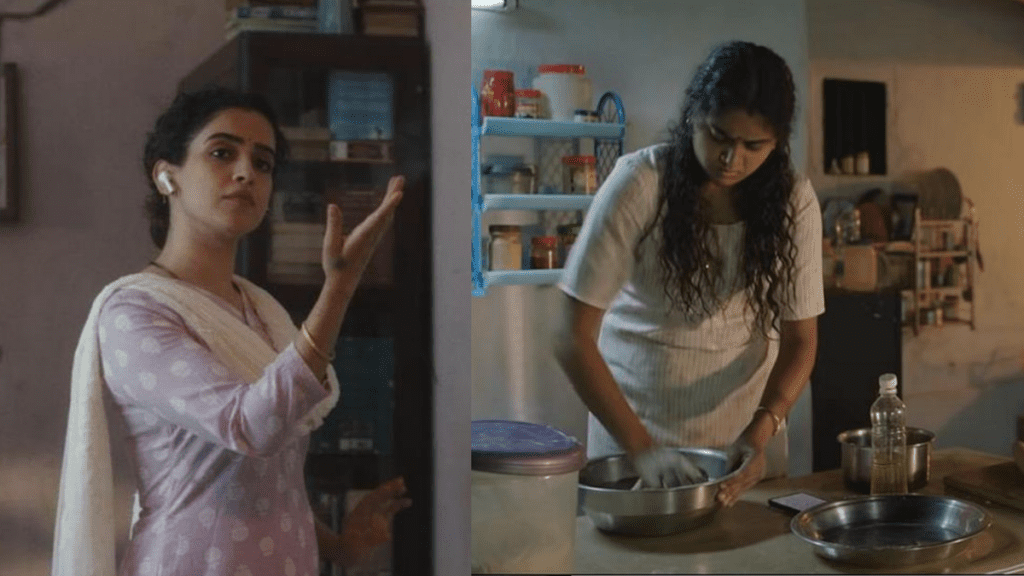Exploring the Necessary Remake of The Great Indian Kitchen: An Analysis of Mrs.
As we step into 2025, it appears to be a year ripe for adaptations. We’ve already witnessed intriguing transformations, such as Black Warrant transitioning from reality to fictional storytelling through literature. Bollywood has also jumped on the remake bandwagon with films like Deva, an adaptation of the Malayalam classic Mumbai Police, and Loveyapa from the Tamil film Love Today. Now, we have Mrs., derived from The Great Indian Kitchen—a remake that holds significance despite its shortcomings compared to the original film. Let’s delve into why this is important!
Also Read: The Mehta Boys Review: Authenticity in Film
The adaptation of Mrs. faced initial scrutiny for not crediting Jeo Baby and their talented crew. Although this issue was later remedied, it indicates a larger industry problem of ensuring rightful acknowledgment for original creators. Nevertheless, I commend co-writer and director Arati Kadav for embarking on this esteemed project, attempting to weave a woman-centric perspective into the narrative. While I desired more depth, Mrs. resonates well with viewers discovering the story for the first time. However, those familiar with The Great Indian Kitchen might ponder if the shift towards more digestible content for OTT platforms undermines the richness of visual storytelling.
Contrasting Films: Thematic Differences Explored
Quiet Discontent vs. Verbal Dynamics
The Great Indian Kitchen invites viewers into its narrative through silence, employing understated, wordless moments—the awkwardness of arranged marriages, the ill-fated wedding night, and the husband’s struggles with traditional customs—to convey profound meanings. This artistic choice allows viewers the liberty to interpret the unfolding drama. In stark contrast, Mrs. engages the audience with dialogue and music, directing attention towards particular moments while minimizing space for personal reflection. The demands of tradition are illustrated differently in both films: for the father-in-law in TGIK, it’s about the sanctity of homemade meals, while in Mrs., the focus shifts to an obsession with nutrition and wellness. Even the portrayal of husbands diverges, with TGIK’s social science teacher extolling family values, whereas Mrs.’s gynaecologist husband is preoccupied with medical discussions, rarely connecting with the women in his life.
Both films expose the veneer of patriarchy hidden beneath the guise of familial values. However, their execution varies significantly; TGIK employs silence to highlight oppression, while Mrs. presents a more explicit view of male grievances as both the father-in-law and husband address Richa directly about their frustrations.
Raw Realities vs. Explanatory Narratives
The suffocation of married life for women is effectively portrayed in TGIK through repetitive, unvoiced routines. From the mundane tasks of handing off toothbrushes and slippers to preparing meals and enduring intimate neglect, the film feels like a voyeuristic snapshot of domestic life. The editing complements this reality, with the wife oscillating between chores as though trapped in an inexorable cycle. Even when a cousin’s visit offers a brief sense of relief, the lingering turmoil remains ever-present.
While Mrs. mirrors some of these patterns—Richa learns to cook via YouTube, cleans messes, and ultimately suffocates under her husband’s weight—its tone is more explanatory, filled with quips and colorful moments. Conversations around marriage, work, and intimacies transform into verbal sparring, contrasting sharply with the underlying tension in TGIK where sentiments simmer under heavy silences.
Subtlety in Performance vs. Playful Expression
Both leading ladies find liberation through dance, asserting their identity against an oppressive culture that belittles their worth based on traditional gender expectations. In TGIK, Nimisha Sajayan delivers a quiet, nuanced portrayal of a woman who, while embracing her roles, is unaware of her voice until the relentless grind pushes her toward rebellion. Her moment of catharsis—when she serves her husband drain water as tea—is a powerful release of pent-up frustration that has built throughout the film.
Conversely, Sanya Malhotra’s Richa embarks on an overt journey of self-discovery. Her playful spirit and desire to stand up for herself transform throughout her narrative, culminating in a symbolic dance performance that stands as her triumph. While Nimisha embodies a quieter rebellion through teaching dance, Sanya’s character embodies the assertiveness of drawing boundaries between her identities as a daughter and a wife. Each actress embodies a unique route to empowerment, signifying the multifaceted experiences women navigate towards self-assertion.
Kitchen Politics vs. Marriage Dynamics
The Great Indian Kitchen lays bare the intricate associations between domestic spaces and women’s voices, revealing how cultural and religious structures fortify subjugation post-marriage. The film critically examines societal norms—such as women’s access to temples during menstruation—that reinforce their confinement to the household.
In contrast, Mrs. shifts to unpack the cultural ramifications underscored by the term “Mrs.” Arati Kadav’s narrative navigates the expectations tied to a woman’s married life, particularly reflecting North Indian practices. Traditions like Karva Chauth are presented through a modern lens but ultimately reveal the entrenched patriarchal undercurrents that demand women carry the burden of these rituals.
While both films depict the struggles of married women, their distinctive labels underscore how they approach the intersection of kitchen and marriage politics. Jeo Baby critically focuses on the oppressive household dynamics, while Kadav expands this discussion to encompass the identity politics tied to marital titles, emphasizing the kitchen as a foundational space where women’s narratives often begin and endure.
In conclusion, both films are vital in igniting a discussion about the entangled politics of domesticity and womanhood within the realm of marriage. Each narrative carries its own urgency. If Mrs. resonated with you, I urge you to watch The Great Indian Kitchen; the original offers a raw and visceral experience, leaving a lasting discomfort. In contrast, while Mrs. presents a more polished approach, it maintains essential social commentary on women’s lives. Neither film is superior; rather, they complement each other in their explorations—one being haunting yet transformative, the other insightful and thought-provoking!
Currently, Mrs. is available for streaming on Zee5, while The Great Indian Kitchen can be found on Amazon Prime Video!
For further updates, follow us on @socialketchupbinge


